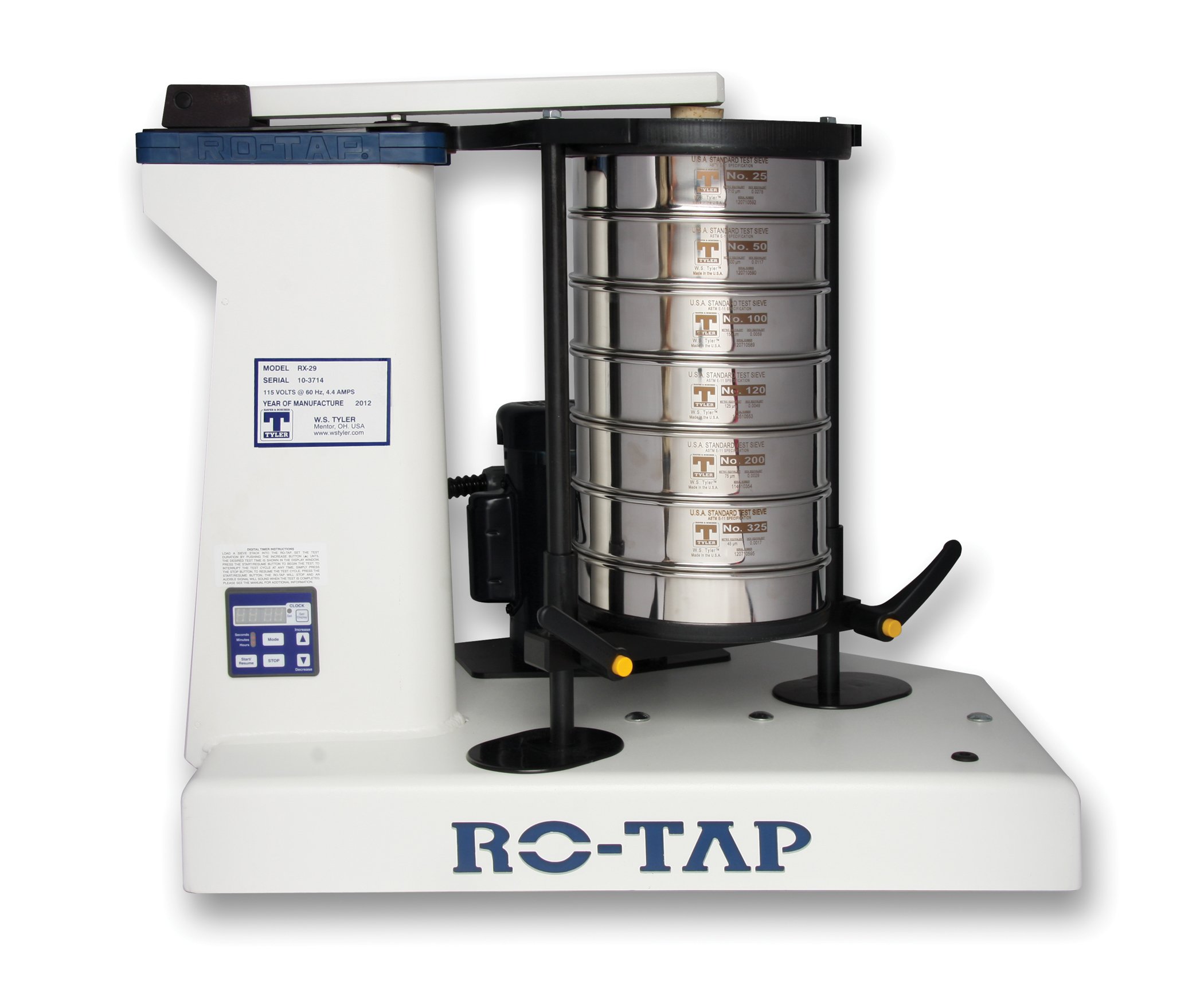What Is a RO-TAP® Sieve Shaker? (Definition, Types, and Calibration + Video)
With over 100 years of experience in the particle analysis world, we’ve worked with customers of all levels of knowledge when it comes to sieve shakers. We know that sometimes finding the right particle analysis equipment for your needs can be tough.
There is a ton of information out there about oscillations, standards, and sometimes it can just be plain overwhelming. We wrote this article to help you better understand what a sieve shaker is, what a sieve shaker does and how you can find out which one you need.
We want you to establish a base level understanding of RO-TAP® sieve shakers and which type of machine may be right for your business based on your own industry standards.
What is the RO-TAP?
You may have landed on this page because you are specifically interested in the W.S. Tyler
RO-TAP or maybe you just are looking for information on sieve shakers. If you are confused about which is which, let me explain.
A Sieve shaker is an industry term for a machine that is used to separate particles. The sieve shaker itself can be from any company, brand, or model.
A RO-TAP is the W.S. Tyler branded version of a sieve shaker.
Think of it like Kleenex. Everyone knows when they say, “Can you hand me a Kleenex?” that they are actually asking for a tissue. Because Kleenex it’s such a widely known brand name, we use it interchangeably with the word tissue.
This is how a sieve shaker and a RO-TAP works. In this case, a sieve shaker is the “tissue” and the RO-TAP is like the “Kleenex”.
We aren’t giving this example to brag about how well-known our product is. We actually get calls from people who were told they need to purchase a “RO-TAP” by someone at their company, and when we call it a “sieve shaker” they tell us, “I don’t need a sieve shaker, I need a RO-TAP.”
So, for the rest of this article, know that almost all of what we are going to talk about applies to both the RO-TAP and other sieve shakers out there. All sieve shakers are designed to perform the same job. The only thing that may vary is the specifications and design of the machine.
What Does a RO-TAP Do/How Does it Work?
A RO-TAP is a particle analysis machine that is used in all kinds of industries to test and separate particles.
An oscillating motion is used to shake particles down through a series of different test sieves in a stack. Not sure what a test sieve is? You can learn all about test sieves in our article, What is a Test Sieve?
Basically, the machine holds a stack of sieves and then shakes the stack so that the material falls down through all the sieves and gets stuck at each different size opening. The machine was created to get consistent, repeatable results that are more reproducible than hand sieving.
The RO-TAP can hold a stack of sieves anywhere from 1 to 13 sieves high. Using 13 sieves in a stack is pretty uncommon, this would be half height sieves. We see most customers using 6 full height sieves in their stack.
Your industry standards will tell you how many sieves you need to use for your analysis.
Each of your test sieves in the stack will consist of a different opening size (largest opening on top in descending order). Your opening sizes are dictated by your industry standards and by the material you are sieving.
In some cases, it is actually written into an industry standard to use a RO-TAP specifically. But we can get into this later.
Types of Sieve Shakers
One of the more confusing parts about sieve shakers (once you understand test sieves) is knowing which model you need.
Here at W.S. Tyler, we have two types of RO-TAP’s: mechanical and electronic.
The type of model you need is usually defined in your industry standards, but even that can get a bit tricky without knowing the options and functions of the two types of RO-TAPs.
Mechanical Sieve Shakers
These are the most commonly used and popular type of sieve shakers. They are the ones that have been around forever. They use a hammer to tap and circular oscillations to help separate particles.
These machines have to be secured or bolted down because they can move a lot. If they aren’t bolted to a table or a workbench, they can walk themselves off the table - literally.
We get a lot of comments about noise when it comes to the RO-TAP. Let’s not beat around the bush, the machine was created to tap and shake - it’s loud. The machine runs at around 85 decibels.
Types of Mechanical Sieve Shakers
RX-29 and RX-30
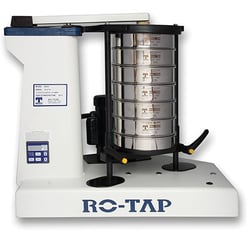
These are the two most commonly used sieve shakers. Each of these models are essentially the same, but the RX-29 uses 8 inch test sieves and the RX-30 is for 12 inch test sieves.
The RX-29 can hold 6 full height sieves or 13 half height sieves. The RX-30 can hold 4 full height sieves or 8 half height sieves.
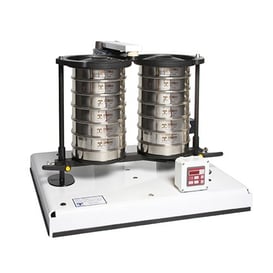
RX-94
This model follows the same basic design as the RX-29 and RX-30 but has room for two 8 inch sieve stacks instead of one. This means you can run two tests at one time.
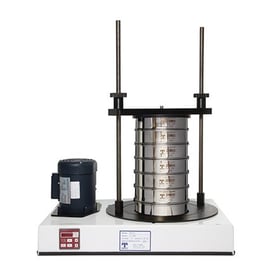
RX-812
This model is designed to sieve only coarse particles (80 mesh and courser) such as a gravel sample. Coarser material doesn’t require as much shaking to sieve because it doesn’t struggle to find the openings in the mesh on its own.
Both 8-inch and 12-inch sieves work with this machine using an adapter.
What Maintenance Does a Mechanical Sieve Shaker Need?
Sieve shakers are very durable machines. We get calls from people that have purchased our machines over 50 years ago, and they are still using them today.
Just because they last a long time doesn’t mean that they won’t need maintenance or don’t require upkeep.
We like to say that during the first year of using a brand new RO-TAP, you shouldn’t need to change out any parts. Some oil along the way on parts that are rubbing may be required, but it should work smoothly.
After a prolonged period of use, you may start to see some of the major parts start to show some wear.
We have put together maintenance kits that offer those most commonly replaced parts. The parts aren’t too difficult to replace and can be done by following some simple instructions.
Electronic Sieve Shakers
These sieve shakers use a 3-D motion instead of a tapping motion like in the mechanical units.
They take up less space on the counter and are a bit more “low maintenance” than the mechanical RO-TAPs. They are also a lot quieter than the mechanical RO-TAPs because they don’t have the hammer on them.
We get a lot of questions about the differences between our electronic and mechanical units, so we wrote an article all about it: Electronic VS Mechanical Sieve Shakers.
Types of Electronic Sieve Shaker Models
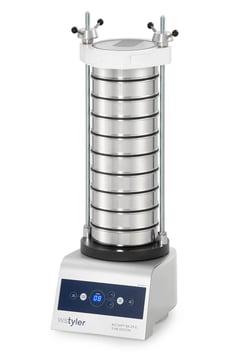
RO-TAP E Pure
This model use 8-inch test sieves and are intended for use with light to medium testing applications.
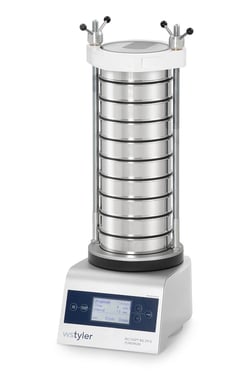
RO-TAP E Premium
This model has the same look as the Pure model but it has more settings when it comes to sieving results. You are able to control the amplitude and the intervals.
How Much Does a RO-TAP Cost?
We sell quite a few different models of the RO-TAP. The cost for each machine is a standard price, and there are accessories and add ons for each device as well.
These units cost anywhere from $1,917.75 to $9,956.93.
To learn more about each unit and their cost you can check out our article: How Much Does A RO-TAP® Sieve Shaker Cost?
How Do I Know My Sieve Shaker Standards?
The most complex, but important, thing to understand when we talk about particle analysis is industry standards. If you have read our test sieve article, you should have a good handle on the standards when it comes to the actual sieves inside your machine.
Beyond standards for your sieves, your sieve shaker itself can also be noted into your industry standards. Sometimes you will be required to use a sieve shaker of a certain caliber that uses a distinct type of motion.
The RO-TAP has been around for a long time. In some cases, the RO-TAP is the exact shaker that the person had in mind when they wrote the industry standards and the standard actually refers to it by name.
If you don’t know your industry standards you can find yours by going to the ASTM website.
Let’s take a look at an example of a real standard a customer found for their industry.

This person found their standards based on their industry and the material they are sieving. You can see that it requires they use a shaker to test their material that uses both a tapping and a rotating motion. It also lists the performance specs that the machine needs to perform.
Can My Sieve Shaker Be Calibrated/Certified?
We get this question a lot when it comes to sieve shakers. Right now, there is no way for anyone to calibrate or certify the actual sieve shaker machine itself. You can certify your test sieves that are used inside the machine, but the machine itself cannot be calibrated.
When someone says that they need their machine calibrated we offer assistance to help them be sure their machine is still running at the manufacturing specifications. This is done by a few tests you can run yourself like checking the oscillation speed.
Final Thoughts
We hope that this article helped you understand what a RO-TAP Sieve shaker is and how you can find the right machine for your needs based on your standards.
Here are some more resources that may be helpful:
1. Pros and Cons of a RO-TAP® Sieve Shaker
2. Computerized Particle Analyzer VS Sieve Shakers
3. How Long Do I Run My Sieve Shaker For?
If you need a sieve shaker for your business and need help choosing which model is right for you, you can reach out to our team and we would love to help you.
Want all the latest industry trends and innovations sent directly to your inbox? Subscribe to our monthly newsletters today.

